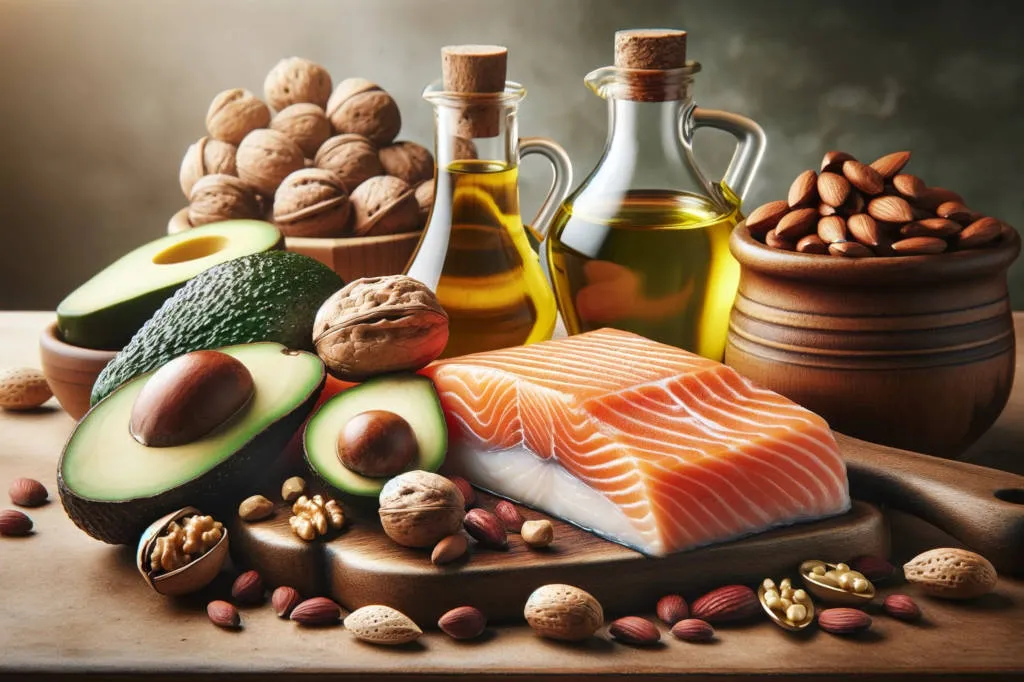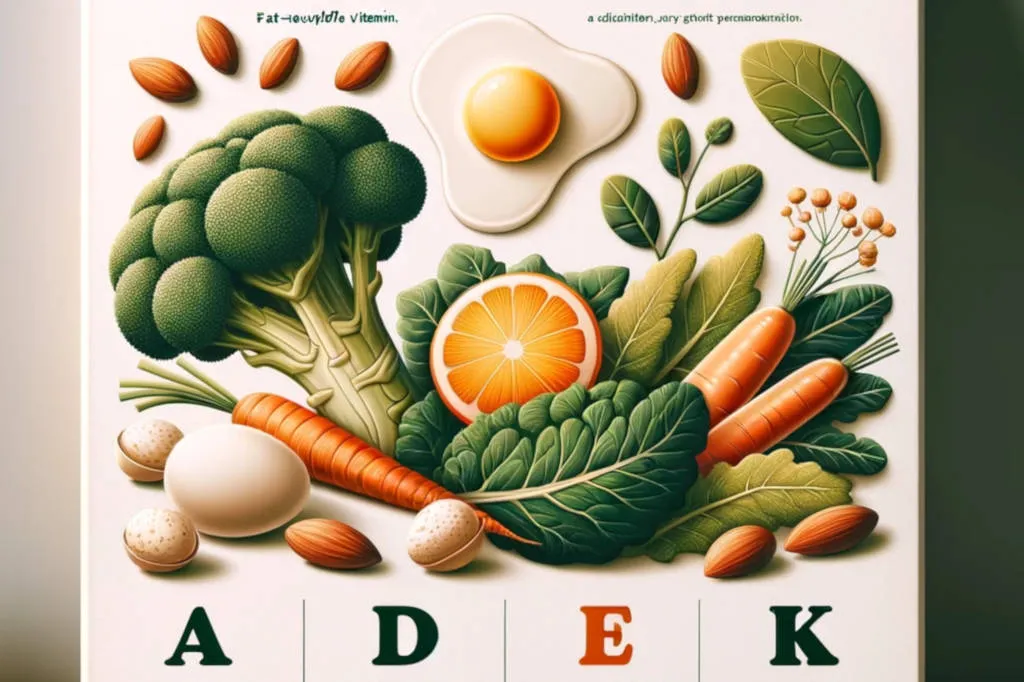“Which of the following is not a fat-soluble vitamin?” It’s a question that has intrigued many health enthusiasts and those keen on understanding the intricacies of nutrition. Vitamins play a crucial role in our body, ensuring smooth and efficient bodily functions. But not all vitamins are created equal. In this article we’ll explore the fascinating world of vitamins, their classifications, and the vital differences that determine their absorption and utility in our system. Dive in to unravel the mystery of fat-soluble versus water-soluble vitamins and make informed dietary choices for optimum health.
Table of Contents
What are Vitamins?
Vitamins are organic compounds that our bodies require in small amounts to maintain optimal health and functionality. Unlike macronutrients, like carbohydrates, proteins, and fats which supply energy, vitamins play a crucial role in various biochemical processes, aiding in growth, digestion, and nerve function.
Two Main Categories of Vitamins:
- Fat-Soluble Vitamins: These are vitamins that can dissolve in fats and oils. They are stored in the body’s fatty tissues and the liver, and can stay there for days, sometimes even months. Examples include Vitamins A, D, E, and K.
- Water-Soluble Vitamins: These vitamins dissolve in water and are not stored in the body. Instead, they are eliminated in urine. Since they aren’t stored, it’s necessary to consume them more frequently. Examples are the B-vitamins and Vitamin C.
Now, to address the focus question, which of the following is not a fat-soluble vitamin? The most direct answer is Vitamin C. It’s a water-soluble vitamin and does not store in the body’s fat.
The importance of vitamins cannot be overstated. While they might be required in minute quantities, their influence on our health and wellbeing is substantial. With a balanced diet, most individuals can obtain all the essential vitamins they need. However, certain circumstances or conditions may require supplements, but always consult with a healthcare professional before adding them to your regimen.
Classification of Vitamins
When we delve into the world of vitamins, understanding their classification is crucial. Vitamins are broadly categorized based on their solubility, which determines how they are absorbed, transported, stored, and excreted by the body.

1. Fat-Soluble Vitamins:
Characteristics:
- Dissolve in fats and oils.
- Stored in the body’s fatty tissues and liver.
- Can remain in the body for extended periods, leading to the potential for toxicity if consumed in excessive amounts.
- Not required daily in the diet since the body can pull from its reserves.
Examples:
- Vitamin A: Essential for vision, immune system, and reproduction.
- Vitamin D: Maintains bone health by aiding calcium absorption.
- Vitamin E: An antioxidant that protects cells from damage.
- Vitamin K: Plays a pivotal role in blood clotting.
2. Water-Soluble Vitamins:
Characteristics:
- Dissolve in water.
- Not stored in the body, making daily intake essential.
- Excess amounts are eliminated through urine, which means there’s a lower risk of toxicity.
- Must be replenished more frequently than fat-soluble vitamins.
Examples:
- B-Vitamins (like B1, B2, B3, B6, B12, Folic Acid, Pantothenic Acid, Biotin): Vital for energy production and the formation of red blood cells.
- Vitamin C: Important for collagen synthesis, wound healing, and as an antioxidant.
Vitamin C and all the B-vitamins are water-soluble and are not stored in the body’s fat.
By understanding the classification of vitamins, you can make more informed decisions about your dietary and supplement needs, ensuring a well-balanced approach to nutrition. Always remember, while vitamins are essential, balance is the key. Overconsumption can lead to complications just as deficiency can.
Characteristics of Fat-Soluble Vitamins
Navigating the realm of nutrition, one frequently encounters the term “fat-soluble vitamins.” But what exactly does this mean, and why is it crucial to comprehend? By understanding the properties of these vitamins, you’ll be better equipped to maintain optimal health and make informed dietary choices.

1. Solubility in Fat:
Fat-soluble vitamins dissolve in fats and lipids, unlike their water-soluble counterparts. This solubility means that they are more readily absorbed in the presence of dietary fat.
2. Storage in the Body:
One of the primary characteristics of fat-soluble vitamins is their ability to be stored in the body’s fatty tissues and the liver. This allows the body to maintain reserves that can be utilized when dietary intake is insufficient.
3. Longer Duration in the Body:
Due to their storage capacity, these vitamins remain in the body for more extended periods. While this can be advantageous, it also means that excessive intake might lead to an accumulation, potentially reaching toxic levels.
4. Slow Excretion:
As they’re stored in fat, fat-soluble vitamins are not rapidly excreted in urine like water-soluble ones. Instead, they leave the body at a slower rate, mainly through feces.
5. Essential Roles:
Each of the fat-soluble vitamins has distinct functions:
- Vitamin A: Supports vision and immune health.
- Vitamin D: Assists in calcium absorption, promoting bone health.
- Vitamin E: Acts as a powerful antioxidant, protecting cells from damage.
- Vitamin K: Essential for blood clotting and bone health.
6. Dietary Sources:
Foods rich in fats, like fish, dairy products, and certain oils, are usually excellent sources of these vitamins. Thus, individuals on extremely low-fat diets may need to monitor their intake of these essential nutrients.
In summation, while the query helps underline the differences between vitamin types, knowing the characteristics of fat-soluble vitamins ensures a balanced and safe approach to health and nutrition.
List of Fat-Soluble Vitamins
The realm of vitamins can sometimes seem overwhelming with the multitude of names, functions, and sources. To clarify the mystery surrounding the question, it’s essential first to identify which vitamins fall under the fat-soluble category.

1. Vitamin A (Retinol):
- Primary Functions: Supports vision, growth, reproduction, and immune function.
- Sources: Carrots, sweet potatoes, kale, spinach, dairy products, and liver.
2. Vitamin D (Calciferol):
- Primary Functions: Regulates calcium and phosphorus in the blood, promotes bone and teeth formation.
- Sources: Sunlight exposure, fortified dairy products, fatty fish, and egg yolks.
3. Vitamin E (Tocopherol):
- Primary Functions: Acts as an antioxidant, protecting cells from free radical damage and supporting immune function.
- Sources: Vegetable oils (like wheat germ oil), nuts, seeds, and green leafy vegetables.
4. Vitamin K:
- Primary Functions: Essential for blood clotting, regulates blood calcium levels, and supports bone health.
- Sources: Green leafy vegetables (like kale and spinach), broccoli, Brussels sprouts, and vegetable oils.
In understanding which vitamins are fat-soluble, we move one step closer to discerning the essential question. By being informed about these crucial nutrients, you can make more educated decisions about your dietary and supplementation choices.
Vitamin A
When probing the question, “which of the following is not a fat-soluble vitamin?”, it’s undeniable that Vitamin A stands out as a quintessential fat-soluble vitamin. Delving deeper into its properties, sources, and functions can provide clarity on its vital role in our health.

Definition and Types:
Vitamin A is a group of fat-soluble retinoids, including retinol, retinal, and retinyl esters. It exists in two primary forms:
- Preformed Vitamin A (retinol) – found in animal products.
- Provitamin A Carotenoids (like beta-carotene) – present in plant-based sources and can be converted into retinol in the body.
Primary Functions:
- Vision: Vitamin A is paramount for maintaining healthy vision, especially in low-light conditions.
- Immune System: It bolsters the immune system by aiding in the production and function of white blood cells.
- Reproduction: Vitamin A plays a role in reproduction and is essential for embryonic development.
- Cellular Communication: Helps cells communicate with each other, guiding processes like cell growth.
Sources:
- Animal-Based: Liver, fish oils, milk, and eggs.
- Plant-Based: Foods high in beta-carotene such as carrots, sweet potatoes, and dark leafy greens.
Deficiency:
Lack of Vitamin A can lead to night blindness, a weakened immune system, and skin problems. In severe cases, it can cause total blindness.
Overconsumption:
While Vitamin A is crucial, excessive intake, especially from supplements, can be toxic. Symptoms include dizziness, nausea, headaches, and even hair loss.
Understanding the role of Vitamin A in the body underscores its importance and makes it evident that it’s not the answer to the topic question. Rather, it’s a shining example of the indispensable fat-soluble vitamins crucial for our well-being.
Vitamin D
In the exploration of the topic query, Vitamin D emerges as another prominent member of the fat-soluble vitamin family. Understanding its importance, sources, and impact can enhance our knowledge of its significance in human health.

Definition and Types:
Vitamin D is unique among vitamins because it can be produced in the skin from sunlight. It comprises a group of fat-soluble secosteroids, with two primary forms significant to humans:
- Vitamin D3 (cholecalciferol): Produced in the skin when exposed to sunlight and also found in certain animal-based foods.
- Vitamin D2 (ergocalciferol): Found in some plant sources and fungi.
Primary Functions:
- Bone Health: Collaborates with calcium to bolster bone strength and structure.
- Immune System: Vitamin D plays a pivotal role in enhancing our pathogen-fighting abilities.
- Mood Regulation and Brain Health: There’s evidence suggesting its role in regulating mood and warding off depression.
- Supporting Diabetes Management: May play a role in regulating insulin and managing diabetes.
Sources:
- Sunlight: The primary and most efficient source. Skin exposure to sunlight facilitates the synthesis of Vitamin D.
- Dietary: Fatty fish (like salmon and mackerel), beef liver, cheese, egg yolks, and fortified foods (like cereals and milk).
Deficiency:
A shortfall in Vitamin D can lead to brittle bones (osteoporosis), fatigue, mood fluctuations, and weakened immunity. Severe deficiency in children can result in rickets.
Overconsumption:
An overabundance of Vitamin D, usually from supplements, can result in hypercalcemia (high calcium levels in the blood) leading to complications like heart arrhythmias and kidney stones.
As we delve into Vitamin D’s role and significance, it becomes clear that it isn’t the answer to the topic question. On the contrary, it exemplifies the critical functions of fat-soluble vitamins in maintaining human health.
Vitamin E
Vitamin E, another contender in the fat-soluble vitamin lineup, is often lauded for its potent antioxidant properties. When addressing “which of the following is not a fat-soluble vitamin?”, it’s vital to recognize Vitamin E’s characteristics, benefits, and role in human health.

Definition:
Vitamin E refers to a group of eight chemically distinct compounds that include both tocopherols and tocotrienols. Among these, alpha-tocopherol is the most active form in humans.
Primary Functions:
- Antioxidant Defense: Vitamin E acts as a powerful antioxidant, combating free radicals in the body that contribute to cellular damage.
- Skin Health: It plays a crucial role in skin repair, keeping it moisturized and protected from UV radiation.
- Immune Boost: Aids in proper immune system functioning, especially in older individuals.
- Vision: Helps reduce the risk of age-related macular degeneration.
Sources:
- Dietary: Nuts and seeds (especially almonds and sunflower seeds), vegetable oils (like wheat germ oil), spinach, broccoli, and fortified cereals.
- Supplements: Vitamin E supplements are available in both natural and synthetic forms.
Deficiency:
While rare, a deficiency can lead to neuromuscular issues like muscle weakness and vision problems, impaired immune response, and even anemia.
Overconsumption:
Excessive Vitamin E, primarily from supplements, can result in bleeding due to its blood-thinning properties.
As we unfold the various aspects of Vitamin E, its stature as a fat-soluble vitamin becomes apparent, further emphasizing that it’s not the answer to the topic query. Instead, it reinforces the multifaceted and essential roles these vitamins play in promoting health and wellness.
Vitamin K
The conversation about fat-soluble vitamins would be incomplete without mentioning Vitamin K. It’s crucial to understand its importance when considering the topic question. Given its vital roles in our health, Vitamin K stands out as a key player among the fat-soluble vitamins.

Definition:
Vitamin K is a group of structurally similar, fat-soluble vitamins that the human body requires for complete synthesis of certain proteins that are prerequisites for blood coagulation. There are two main types: K1 (phylloquinone) and K2 (menaquinone).
Primary Functions:
- Blood Clotting: Vitamin K is essential for the blood clotting process, which prevents excessive bleeding.
- Bone Health: It aids in bone mineralization, reducing the risk of osteoporosis and fractures.
- Heart Health: Helps in preventing the calcification of arteries, a leading cause of heart diseases.
Sources:
- Dietary: Green leafy vegetables like kale, spinach and broccoli for K1. Fermented foods and animal products, like cheese and egg yolks, for K2.
- Supplements: Vitamin K supplements often come as K1, K2, or a combination of both.
Deficiency:
A deficiency is rare but can lead to excessive bleeding, easy bruising, and weakened bones.
Overconsumption:
Although rare, excessive intake, especially from supplements, can interfere with certain medications, especially blood thinners.
Vitamin K’s pivotal role in blood clotting and bone health solidifies its position as a fat-soluble vitamin. As you navigate the complex world of vitamins, knowing the specifics about each one, such as Vitamin K, helps answer questions with clarity and understanding.
Water-Soluble Vitamins
Diving deeper into the world of vitamins, it’s crucial to differentiate between fat-soluble and water-soluble vitamins. This distinction becomes all the more important when addressing the query. Water-soluble vitamins have unique characteristics, sources, and functions that set them apart.

Definition:
Water-soluble vitamins are those that dissolve in water and are not stored in the body. Instead, they travel freely in our bloodstream and whatever the body doesn’t use is excreted through urine.
Characteristics:
- Limited Storage: Since they’re not stored in the body, they need to be consumed more regularly.
- Quick Absorption: They’re absorbed directly by tissues for immediate use.
- Excretion: Excess amounts are excreted in urine, reducing the risk of toxicity.
List of Water-Soluble Vitamins:
- Vitamin C: Essential for skin health, wound healing, and immune function.
- B Vitamins: This includes a group of 8 vitamins such as B1 (Thiamine), B2 (Riboflavin), B3 (Niacin), B5 (Pantothenic acid), B6, B7 (Biotin), B9 (Folate or Folic Acid), and B12. They play vital roles in energy production, red blood cell formation, and neurological functions.
Primary Functions:
- Energy Production: Most B vitamins help convert food into energy.
- Antioxidant Protection: Vitamin C acts as a powerful antioxidant, protecting cells from damage.
- Brain Health: B vitamins, especially B12, are crucial for neurological functions.
Sources:
- Dietary: Citrus fruits, berries, green vegetables, whole grains, and legumes are excellent sources of water-soluble vitamins.
- Supplements: They’re available in multivitamin/mineral supplements and stand-alone supplements.
Note on Overconsumption:
Though toxicity is rare, excessive consumption of certain water-soluble vitamins, especially from supplements, can lead to adverse effects. For instance, too much vitamin B6 can lead to nerve damage.
As you traverse through the diverse vitamin landscape, understanding water-soluble vitamins becomes key to pinpointing which is not a fat-soluble. Their unique characteristics and their non-storage nature make them distinctive in the realm of essential nutrients.
Key Differences between Fat-Soluble and Water-Soluble Vitamins
To effectively address the central question, it’s pivotal to grasp the fundamental differences between fat-soluble and water-soluble vitamins. Both play crucial roles in our health, but they differ significantly in their absorption, storage, and excretion methods.

1. Absorption:
- Fat-Soluble: These vitamins are absorbed alongside fats in the diet and may require bile for absorption.
- Water-Soluble: Directly absorbed by tissues when consumed and readily enter the bloodstream.
2. Storage:
- Fat-Soluble: Stored in the liver and fatty tissues for future use. Excess storage can potentially lead to toxicity.
- Water-Soluble: Not stored in significant amounts in the body. Any excess is excreted through urine, necessitating regular consumption.
3. Transport:
- Fat-Soluble: They require special proteins for transport in the bloodstream.
- Water-Soluble: Travel freely in the bloodstream without the need for carriers.
4. Excretion:
- Fat-Soluble: Excreted at a slower rate. They can remain in the body for extended periods.
- Water-Soluble: Regularly excreted in urine, reducing the risk of accumulation and toxicity.
5. Sources:
- Fat-Soluble: Found primarily in fatty foods and oils. Examples include butter, vegetable oils and fatty fish.
- Water-Soluble: Commonly found in fruits, vegetables and grains.
6. Number:
- Fat-Soluble: Four primary vitamins – A, D, E, and K.
- Water-Soluble: There are many, including eight B vitamins and vitamin C.
7. Potential for Toxicity:
- Fat-Soluble: Due to their storage in fat, there’s a higher risk of toxicity when consumed in large amounts over time.
- Water-Soluble: Generally have a lower risk of toxicity, but certain vitamins (like B6) can cause issues when taken in excessive amounts.
Understanding these key differences between fat-soluble and water-soluble vitamins is essential. It not only helps in making informed decisions about nutrition but also clears the air on the primary query. By understanding their unique characteristics, you can ensure a balanced vitamin intake for optimal health.
Which of the Following is Not a Fat-Soluble Vitamin?
One of the most commonly asked questions in the realm of nutrition and vitamin intake is which vitamin is not a fat-soluble. It’s an important question, as understanding the type of vitamin can directly impact its absorption, utilization, and potential storage in our body.

To answer the question succinctly: The primary fat-soluble vitamins are vitamins A, D, E, and K. So, any vitamin outside of this list, such as the B vitamins or vitamin C, is not fat-soluble. They are water-soluble.
Here’s a brief breakdown:
- Vitamin A – Crucial for vision, growth, and immune function.
- Vitamin D – Essential for bone health, immune system support, and calcium absorption.
- Vitamin E – An antioxidant that protects cells from damage.
- Vitamin K – Plays a pivotal role in blood clotting and bone health.
On the flip side:
- B Vitamins – Important for metabolism, brain function, and red blood cell formation.
- Vitamin C – Essential for collagen production, antioxidant protection, and immune support.
The distinction between these vitamins revolves around their solubility. Fat-soluble vitamins dissolve in fats and are stored in the body, while water-soluble vitamins dissolve in water and excess amounts are excreted through urine.
In wrapping up this section, it’s vital to remember that both types of vitamins are essential for our well-being. However, their classification determines how they are absorbed, stored, and excreted by the body. By grasping the answer to which vitamin is not a fat-soluble, you’re better equipped to manage your dietary choices and ensure optimal vitamin intake.
Importance of Balanced Vitamin Intake
While the topic question provides insight into vitamin classifications, it’s equally imperative to understand the broader significance of maintaining a balanced vitamin intake. A harmonized intake of both fat-soluble and water-soluble vitamins is pivotal for ensuring overall health and optimal body function.

1. Supports Various Body Functions:
Vitamins play diverse roles, from bolstering bone health to facilitating wound healing and enhancing immunity. Every vitamin has its specific function, and a deficiency in any can impair these essential processes.
2. Prevents Deficiencies:
While overdosing on vitamins can have detrimental effects, deficiencies can be equally harmful. Conditions such as rickets (from vitamin D deficiency), night blindness (from vitamin A deficiency), and scurvy (from vitamin C deficiency) can arise from insufficient vitamin intake.
3. Promotes Overall Health:
A balanced vitamin intake contributes to cardiovascular health, supports mental well-being, boosts immunity, and fosters skin and hair health. It also aids in converting food into energy, ensuring vitality throughout the day.
4. Ensures Proper Absorption:
The intake of fat-soluble vitamins requires dietary fats for optimal absorption. Hence, a balanced diet ensures that these vitamins can be adequately absorbed and utilized by the body.
5. Avoids Toxicity:
While water-soluble vitamins rarely cause toxicity due to their excretion via urine, fat-soluble vitamins, when taken in excessive amounts, can accumulate in the body and lead to harmful effects. A balanced intake ensures you get the benefits without the risks.
In conclusion, while understanding the difference between fat-soluble and water-soluble vitamins is crucial, the overarching importance lies in ensuring a balanced intake. This balance guarantees that the body can seamlessly perform its myriad functions, paving the way for a healthier and more vibrant life.
Conclusion
Navigating the world of vitamins can often seem intricate, especially when discerning between fat-soluble and water-soluble categories. However, the core takeaway is the profound importance of these nutrients in our daily lives. While we’ve dissected the answer to “which of the following is not a fat-soluble vitamin?”, it’s essential to remember that both types of vitamins play integral roles in sustaining our health.
Prioritizing a balanced diet ensures that we reap the numerous benefits that vitamins offer, from supporting bodily functions to preventing potential deficiencies. As always, before making any drastic changes to your diet or vitamin supplementation, it’s advisable to consult with healthcare professionals. With the right knowledge and choices, one can optimize well-being and thrive in the journey towards optimal health.
Call to Action
Ready to take your vitamin knowledge a step further? Don’t stop here. Dive deeper into the world of nutrition and make informed choices for a healthier lifestyle. If you found this article insightful, be sure to share it with friends and family. Stay tuned for more informative posts on health and nutrition, and don’t forget to drop your questions or thoughts in the comments section below. Your journey to a balanced and informed dietary approach starts here – take the first step today!
Further Reading
- “Fat-Soluble Vitamins: Updated Review of Their Role and Orchestration in Human Nutrition Throughout Life Cycle with Sex Differences” – This article from Nutrition & Metabolism provides a comprehensive overview of fat-soluble vitamins and their importance throughout different stages of life, including during pregnancy and lactation.
- “Vitamins and Minerals” – The Nutrition Source by Harvard T.H. Chan School of Public Health offers detailed information on the role and requirements of various vitamins and minerals, including both fat-soluble and water-soluble vitamins.
- “Biochemistry, Water Soluble Vitamins” – StatPearls – NCBI Bookshelf – This resource provides in-depth information on water-soluble vitamins, contrasting them with fat-soluble ones, and details their biochemical functions in the human body.
- “Biochemistry, Fat Soluble Vitamins” – StatPearls – NCBI Bookshelf – A detailed exploration of fat-soluble vitamins, including their roles in physiological processes such as vision, bone health, and immune function.
Additionally, you’re invited to explore our collection of articles:





